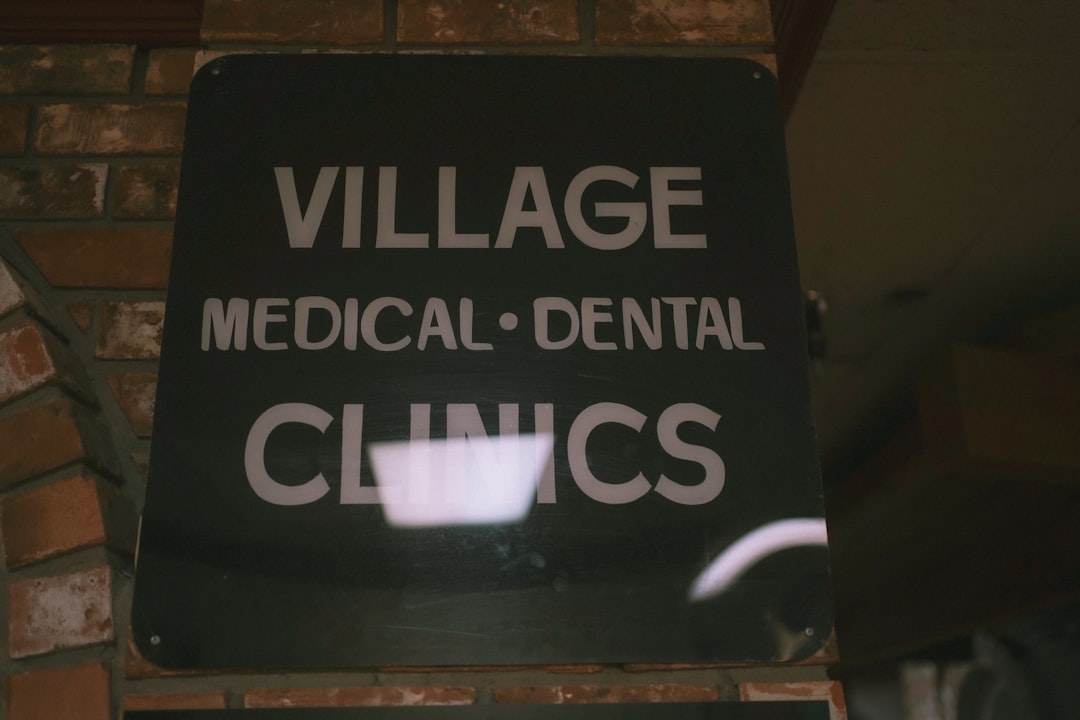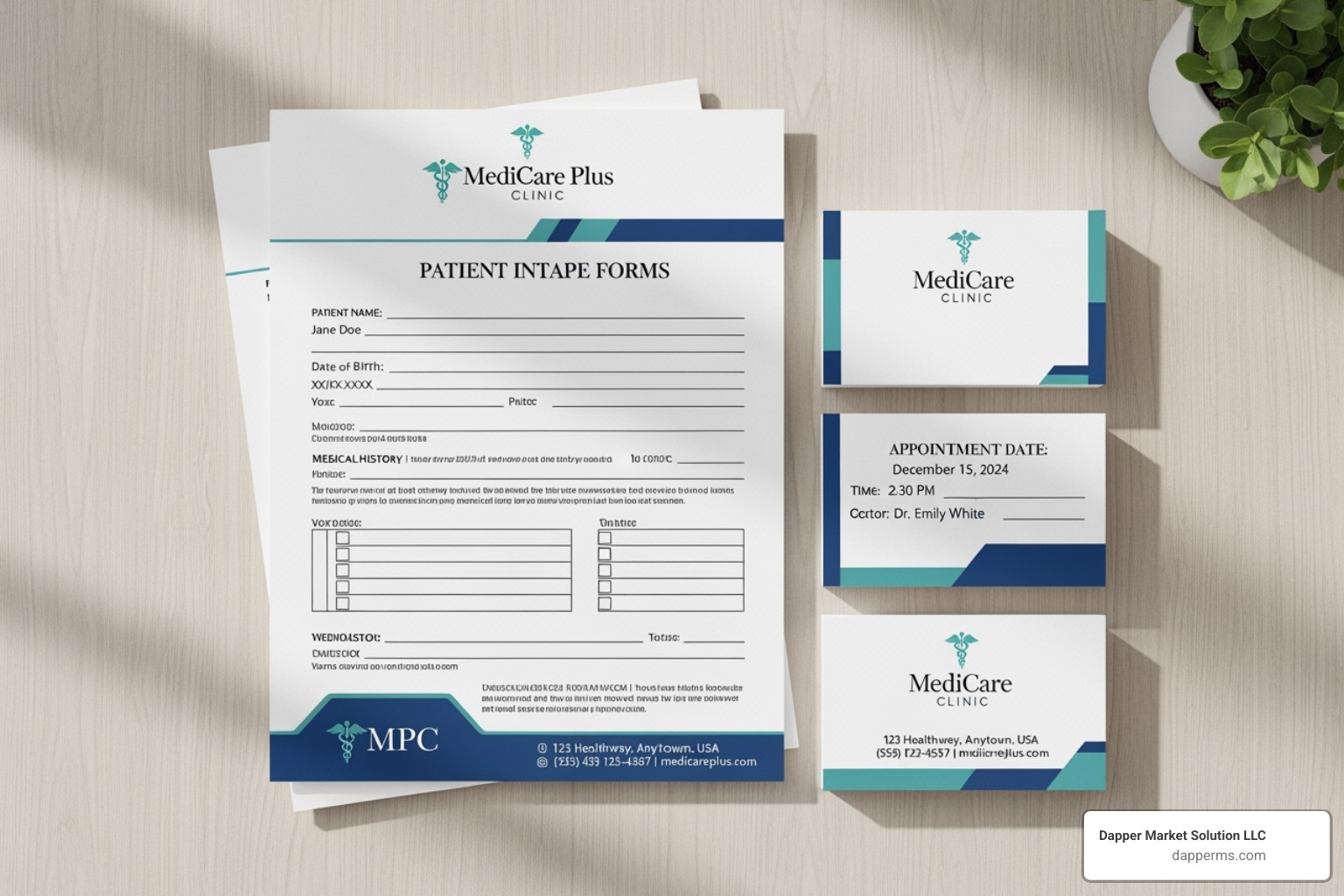

The Pulse of Your Practice: Essential Branding Strategies for Medical Professionals
Why Medical Practice Branding Matters More Than You Think
Branding for medical practices is the process of creating a distinct identity that shapes patient perception and builds trust. Effective branding sets your practice apart, fosters patient loyalty, improves online visibility, and positions you as a quality provider.
In a competitive market, a strong brand is essential for attracting patients. Trust is paramount in healthcare, and it begins with the first impression. Research shows 60% of patients prioritize care and compassion, and 92% prefer staff to wear professional identification. A cohesive brand communicates these values before a patient even makes an appointment.
Branding is more than a logo; it’s every patient touchpoint, including your website, office environment, and communications. Consistency across these elements creates a powerful mental image of who you are and why patients should trust you.
The stakes are high. Negative experiences damage trust for 55% of patients, with most never returning. Conversely, patients who can identify their providers by name report 42% higher satisfaction and are three times more likely to recommend the practice.
I’m Deepak Dashairya, founder of Dapper Market Solutions. I’ve used strategic branding for medical practices and data-driven marketing to help clients achieve 100% occupancy with waitlists. The strategies in this guide are based on real-world results.

The Core Components of Branding for Medical Practices
Effective branding for medical practices starts from the inside out. Before designing a logo, you must define what your brand stands for. This foundational work ensures every subsequent decision feels authentic.
Defining Your Mission, Vision, and Values
Your mission, vision, and values are the heart of your practice. They define your purpose, guide your patient care philosophy, and establish your core principles. These elements shape your hiring decisions, service offerings, and how you handle challenges.
Consider what drives your practice. Is it providing accessible pediatric care, treating the whole person, or offering specialized expertise? These answers form your unique value proposition, answering the patient’s question: “Why should I choose you?” This clarity also helps identify your target patient demographics—the people whose needs align with your strengths.
When your brand is an authentic reflection of who you are, patients notice. They can distinguish between a practice that genuinely believes in human-first care and one that merely uses it as a slogan.
Developing Your Visual Identity
Your visual identity translates your mission into a recognizable look. It’s about creating a consistent, professional presence through your logo design, color palette, typography, and imagery style. These elements work together to create an emotional response.
Colors evoke feelings: blue suggests trust, while green implies healing. Your chosen typography also matters; clean fonts can suggest innovation, while softer letters feel more approachable. Readability is always the top priority.
Consistency is critical. Your visual identity must be applied uniformly across your website, business cards, patient forms, and office signage. Even staff uniforms and name badges are part of your brand. Research shows 89% of patients feel more comfortable when staff wear visible identification, and 68% link quality badges to quality care. For name badges, use a minimum 18-point bold sans-serif font for names and 14-point for titles to ensure a professional aesthetic that builds confidence.

Crafting Your Brand Voice and Messaging
Your brand voice determines how patients feel when they interact with your practice. Are you a warm family doctor or a cutting-edge specialist? Your tone of communication should consistently reflect your values, whether in an email, on the phone, or on waiting room signage.
Develop key messages and a memorable practice tagline that capture what makes you unique. “Caring for families, one generation at a time” tells a story; “Your health partner” is generic.
The biggest mistake is using medical jargon. Use patient-centric language by explaining concepts clearly—for example, saying “high blood pressure” instead of “hypertension.” This maintains professional credibility while ensuring patients understand.
Your brand voice should feel natural and be consistent across all platforms. When your website, emails, and front desk greeting share the same professional, empathetic tone, you build trust through predictability. Every interaction either reinforces your brand or undermines it.
Implementing Your Brand: Creating a Cohesive Patient Experience
Your brand is a promise, and that promise must be kept consistently across every patient interaction. This consistency builds the trust that earns patient loyalty and referrals.
Your Digital Front Door: Website and Patient Portal
Your website is often a patient’s first interaction with your practice, making it a critical starting point for trust. A professional medical website is essential for branding for medical practices. It must be mobile-responsive, load quickly, and offer easy navigation so visitors can find information effortlessly.
Your branded patient portal extends this experience. When patients log in to schedule appointments or view records, they should instantly recognize your practice through your logo, colors, and a custom URL. This reinforces that the digital space is a secure extension of your practice.
To learn more about creating an effective online presence, see our guides on Medical Website Design Tips for Engaging Patients, the Top Features of Effective Medical Websites, and How Custom Healthcare Websites Transform Patient Experiences.

The Power of a Branded Web Portal
A patient portal is a powerful branding tool. Featuring your logo, brand colors, and a custom URL reinforces your professional identity with every login. Functionality like secure messaging, appointment scheduling, and bill pay makes patients’ lives easier. When wrapped in your branding, these features make patients feel more connected to your practice.
This also saves your staff time by reducing phone calls and paperwork. A compelling 95% of survey respondents have either booked a medical appointment online or would if it was available, showing that a well-designed portal meets patient expectations.
Consistent Communications and Office Touchpoints
Your brand is reinforced in every detail. Branded email signatures, newsletters, patient forms, and office signage all contribute to a cohesive experience.
In your office, professional name badges are a key branding element; 89% of patients feel more comfortable when staff wear them. Patient intake forms, appointment cards, and educational materials should also carry your visual identity. This attention to detail communicates professionalism.
Digital communications require the same consistency. All emails and reminders should reflect your practice’s voice and visual style. Even phone etiquette is part of your brand—a warm, professional greeting sets the tone for the entire patient relationship.

Marketing Your Medical Brand: Reaching and Reassuring Patients
With your brand defined, it’s time to promote it through effective, ethical marketing strategies that grow your practice.
Digital Marketing Strategies for Building Your Brand
A strong branding for medical practices strategy is ineffective if patients can’t find you online. Digital marketing is what brings patients through your door.
- Local Search Optimization: This is your top priority. When someone searches “pediatrician near me,” you need to appear. Optimize your Google Business Profile with accurate information and create dedicated landing pages for each location. Learn more with our guides on SEO Techniques for Effective Healthcare Marketing and Healthcare SEO.
- Content Marketing: Demonstrate your expertise by creating helpful blog posts and articles that answer real patient questions. This builds trust and improves search rankings. Explore our insights on Medical Content Marketing Success and Healthcare Content Marketing.
- Email Marketing: With a 37.39% average open rate in healthcare, email is highly effective for newsletters, reminders, and sharing content. It’s 40 times more effective at acquiring customers than Facebook and Twitter combined, and much of it can be automated.
- Social Media: Platforms like Facebook and LinkedIn give your brand a personality. Video content, in particular, performs well and can significantly boost engagement and growth.
- Paid Advertising: Google Ads can accelerate visibility, especially for new practices or specialized services. These ads capture patients actively seeking care. For a complete strategy, see our guides on Digital Marketing Strategies for Healthcare Success and Healthcare Providers: Mastering Digital Marketing Essentials.
Leveraging Patient Reviews and Testimonials
Online reviews are critical: 84% of patients check them before choosing a provider, and 91% are more likely to choose a provider with higher ratings. Actively encourage satisfied patients to share their experiences by sending follow-up emails with direct links to your review profiles. Respond professionally to all reviews to show you are listening.
Patient video testimonials are even more powerful, building credibility in a way written reviews cannot. Feature them on your website and share them on social media to build trust with prospective patients.
Regulatory and Ethical Considerations in Medical Marketing
Healthcare marketing operates under strict guidelines. HIPAA compliance is fundamental, governing how Protected Health Information (PHI) is handled. You must obtain written consent before using patient information in marketing and have Business Associate Agreements with any service providers. Learn more in our guide to HIPAA Compliance for Medical Websites Success. For official guidance, review the HHS HIPAA Privacy Rule Summary.
The Federal Trade Commission (FTC) Act prohibits deceptive marketing. All claims must be accurate and evidence-based. For additional direction, see the FTC’s Health Products Compliance Guidance. FDA regulations apply if you market health products; refer to the FDA’s page on Advertising and Promotion of Prescription Drug Products. The HHS OIG prohibits kickbacks; see the OIG’s Safe Harbor Regulations. Additionally, be aware of state-specific regulations, as they can vary widely. Always put patient interests first and build your brand on authenticity and trust.
Measuring Your Brand’s Impact and ROI
Branding is an investment, and its return should be measured. A data-driven approach can clearly demonstrate how branding for medical practices contributes to business growth.
Key Performance Indicators (KPIs) to Track
Monitoring your brand’s performance is like checking a patient’s vital signs. Key metrics reveal the health of your brand and marketing efforts.
- Website traffic, bounce rate, and time on page show if your messaging resonates.
- New patient appointments are a direct indicator of successful branding.
- Patient retention rates prove that your brand promise aligns with the actual experience.
- Online review ratings serve as a public scorecard for patient satisfaction.
- Brand name searches indicate that people are seeking you out specifically.
Using analytics tools like Google Looker Studio helps visualize this data on dashboards, allowing you to see what’s working and reinvest in successful strategies.
Analyzing Patient Feedback
Numbers don’t tell the whole story; patient feedback provides the human voice behind the data. Patient satisfaction surveys offer structured insights, while focus groups allow for deeper exploration of patient needs. Over 54% of health branding studies use such formative research to ensure messages are understood and valued.
Online review analysis and social media comments offer real-time public perception. Use this feedback not just for reputation management, but as a mirror to identify areas for improvement.
Tying Branding to Business Growth
A strong brand drives measurable growth by attracting more patients, increasing loyalty, and generating referrals. The following table illustrates the potential impact of a strategic branding initiative:
| Metric | Pre-Branding (Baseline) | Post-Branding (After 12 Months) | Change |
|---|---|---|---|
| New Patients/Month | 15 | 25 | +67% |
| Website Conversion Rate | 1.5% | 3.0% | +100% |
| Patient Lifetime Value | $1,500 | $2,000 | +33% |
| Online Review Rating | 3.8 stars | 4.7 stars | +0.9 stars |
| Brand Awareness (Unaided Recall) | 10% | 25% | +150% |
These results show how branding directly impacts revenue. A 67% increase in new patients or a doubled website conversion rate demonstrates a clear return on investment. Tracking these metrics proves that branding is a strategic business decision that delivers long-term value.
Frequently Asked Questions about Medical Practice Branding
How much does it cost to brand a medical practice?
The cost of branding for medical practices varies widely, much like the cost of a house. A solo practitioner might invest a few thousand dollars for a logo, website, and basic materials. A larger, multi-location practice could invest tens of thousands for a comprehensive campaign.
It’s helpful to separate the initial investment (logo, brand identity) from ongoing marketing (SEO, content, ads). Working with professionals who understand healthcare regulations ensures your investment is not wasted. The focus should be on return on investment; a well-branded practice can see a 50-100% increase in new patient appointments in the first year, often recouping the initial cost within months.
How long does it take to see results from branding efforts?
Branding results are both immediate and gradual. Digital marketing can show quicker results, with paid ads driving appointments in days and SEO increasing traffic within weeks. These are important early wins.
However, deeper brand awareness is gradual. Building a reputation as the go-to practice in your community takes time. Meaningful shifts in patient perception and loyalty typically emerge around the 6-12 month mark. Consistency is crucial; a steady, professional brand presence will always outperform sporadic efforts. Branding is a long-term strategy that pays dividends for years.
Can a small or solo practice still have a strong brand?
Yes, absolutely. Smaller practices often have a branding advantage. The internet levels the playing field, allowing you to appear in search results alongside large hospital networks.
Use scalable strategies by starting with the fundamentals: a clear mission, a professional website, and consistent communication. Focusing on a specific niche, such as sports medicine or women’s health, helps you stand out. The personal branding of the physician is also a powerful tool. Patients value the personal touch of a doctor who knows their name, something larger organizations struggle to replicate.
In healthcare, authenticity over budget wins. A solo practitioner who delivers genuine, compassionate care and communicates that online can build a stronger brand than a large system with a generic marketing campaign. Your size is not a limitation; it’s your secret weapon.
Conclusion: Cultivating a Healthy, Trusted Brand for Long-Term Success
Effective branding for medical practices is about creating meaningful connections with patients. It’s a strategic process that involves defining your core identity, creating a consistent visual and verbal style, and implementing it across every touchpoint.
We’ve covered how to define your mission, develop your visual identity, and find your authentic brand voice. We then explored how to implement this brand across your website, patient portal, and office communications to create a seamless experience. Finally, we discussed how to market your brand ethically and effectively through digital channels and how to measure your return on investment.
Building a strong brand requires time and consistency, but the payoff is significant. It allows you to differentiate your practice, build lasting patient loyalty based on trust, and create a practice that not only survives but thrives.
At Dapper Market Solutions, we’ve seen how the right branding strategy can transform a practice, taking healthcare organizations from struggling to running at full capacity with waitlists. That is the power of getting your brand right.
If you’re ready to strengthen your practice’s brand and achieve measurable growth, contact Dapper Market Solutions today. We’re here to help you succeed.

